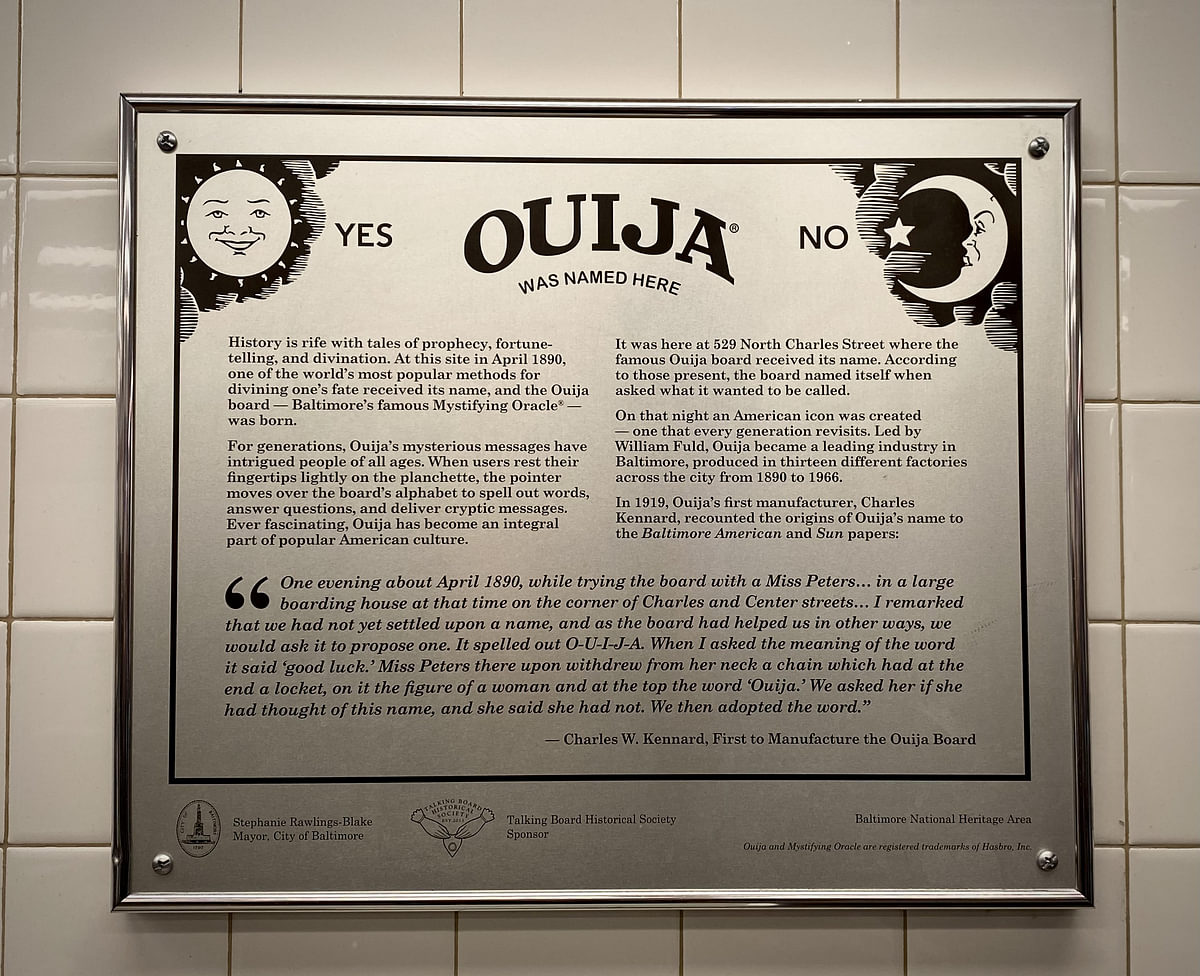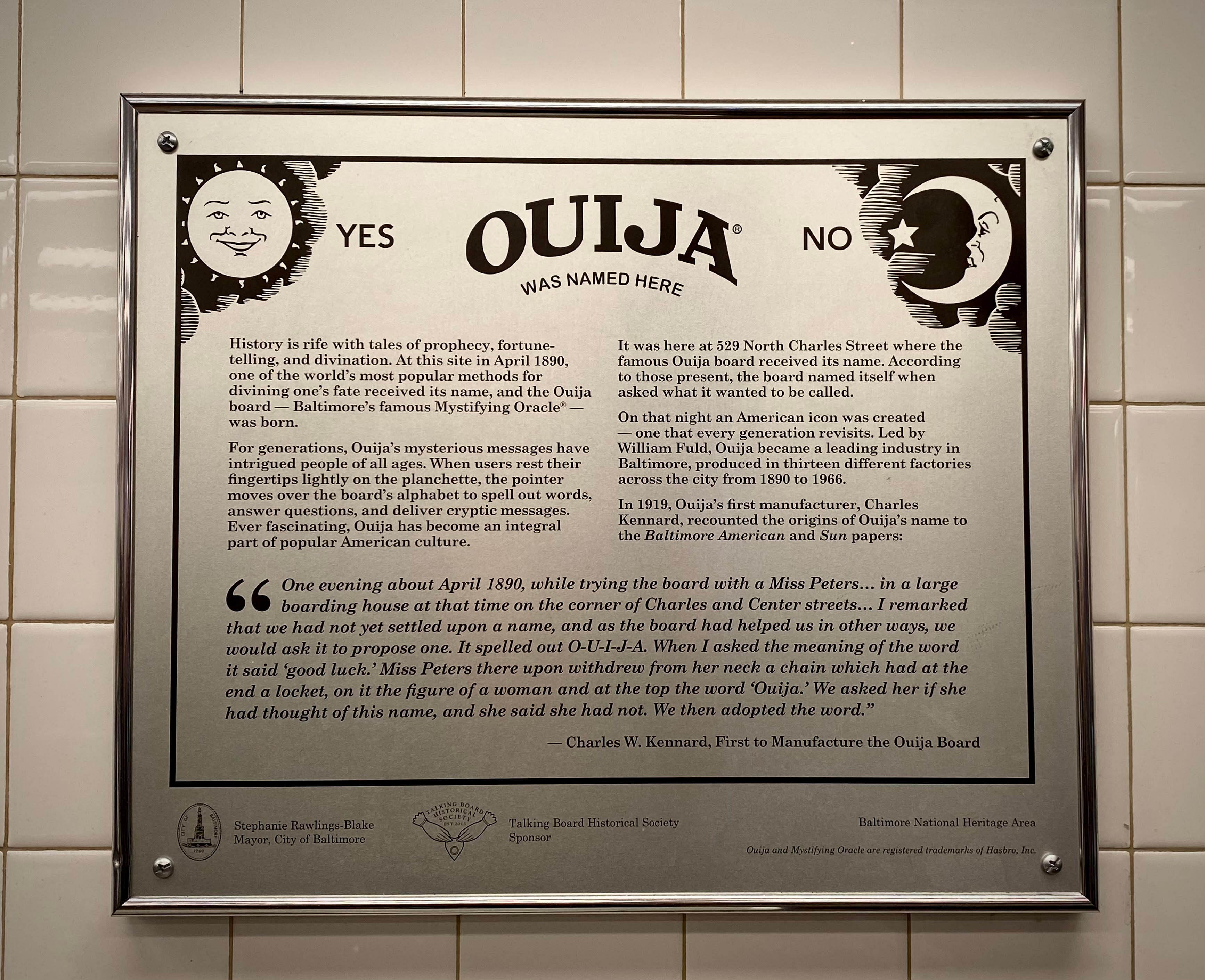
As mentioned in episode #003, Talking to the Dead, one of the strangest historical remnants of the Ouija Board is the fact that it was named at what is now a 7/11. And, if you didn't believe us on the pod...that's okay because now we have proof. Listener Sharon K, a Maryland Resident, had this very 7/11 on her bucket list. So, when she heard us talking about it she decided to head there for herself.
The plaque itself reads, "History is rife with tales of prophecy, fortune-telling, and divination. At this site in April 1890, one of the world's most popular methods for diving one's fate received its name, and the Ouija Board-Baltimore's famous Mysterfying Oracle was born. For generations, Quija's mysterious messages have intrigued people of all ages. When users rest their fingertips lightly on the planchette, the pointer moves over the board's alphabet to spell out words, answer questions, and deliver cryptic messages. Ever fascinating, Ouija has become an integral part of popular American culture. It was here at 529 North Charles Street where the famous Ouija board received its name. According to those present, the board named itself when asked what it wanted to be called. On that night an American icon was created that every generation revisits. Led by William Fuld, Ouija became a leading industry in Baltimore, produced in thirteen different factories across the city from 1890 to 1966. In 1919, Ouija's first manufacturer, Charles Kennard, recounted the origins of Ouija's name to the Baltimore American and Sun papers:
"One evening about April 1890, while trying the board with a Miss Peters...in a large boarding house at the time on the corner of Charles and Center streets...I remarked that we had not yet settled upon a name, and as the board had helped us in other ways, we would ask it to propose one. It spelled O-U-I-J-A. When I asked the meaning of the word it said 'good luck.' Miss Peters thereupon withdrew from her neck a chain which had at the end a locket, in it the figure of a woman and at the top the word 'Ouija'. We asked her if she had thought of this name and she said she had not. We then adopted the word."

However, this plaque raises another question…it does not seem that the board invented a word all on its own, but, rather, that Ouija was a popular enough word to be included on jewelry. Additionally, the fact that Miss Peters was wearing the very word, even if it was potentially obscured by her clothing, definitely raises an eyebrow. This plaque also highlights that the board's name is a meshing of the French word for yes (oui) and the German word for yes (ja) is not true.
The plaque is supported by the Baltimore National Heritage Area, Talking Board Historical Society, and Stephanie Rawlings-Blake, Mayor, of the City of Baltimore, and was put up in 2015. Robert Murch, the Chairman of the Talking Board Historical Society, is to thank for this plaque (and 7/11) finally being recognized as part of Ouija Board history.
So the next time you’re getting a Slurpee, think about what historic events may have happened at your local 7/11 (and keep an eye out for plaques).
Pictures shared by listener Sharon K.